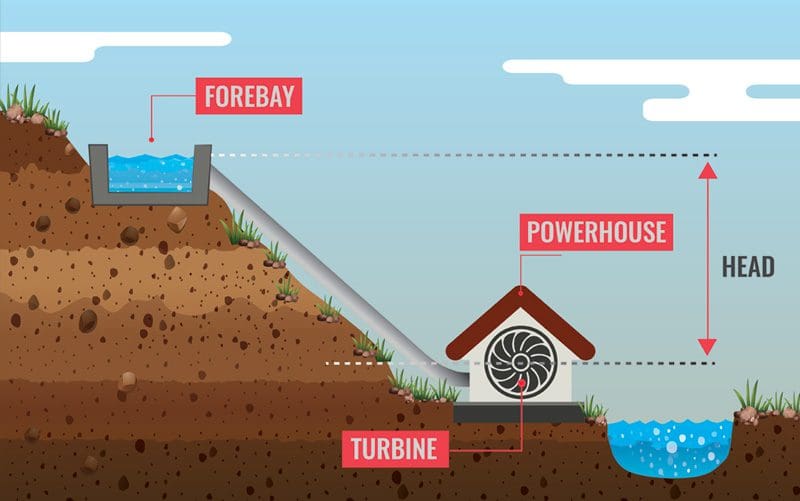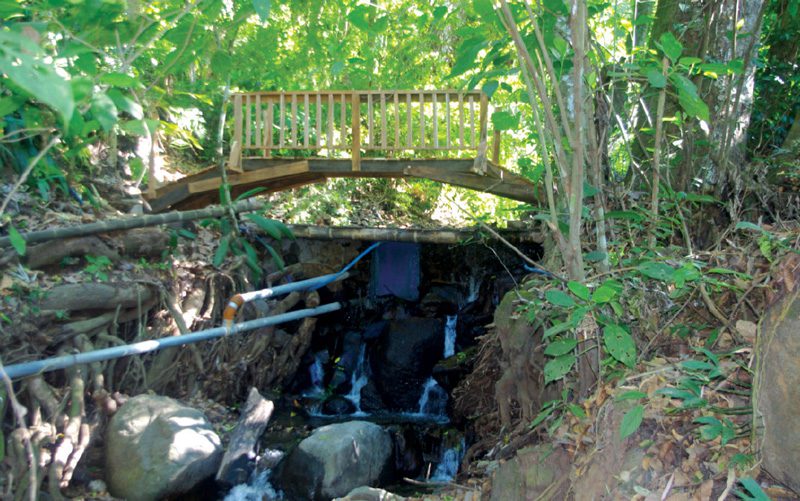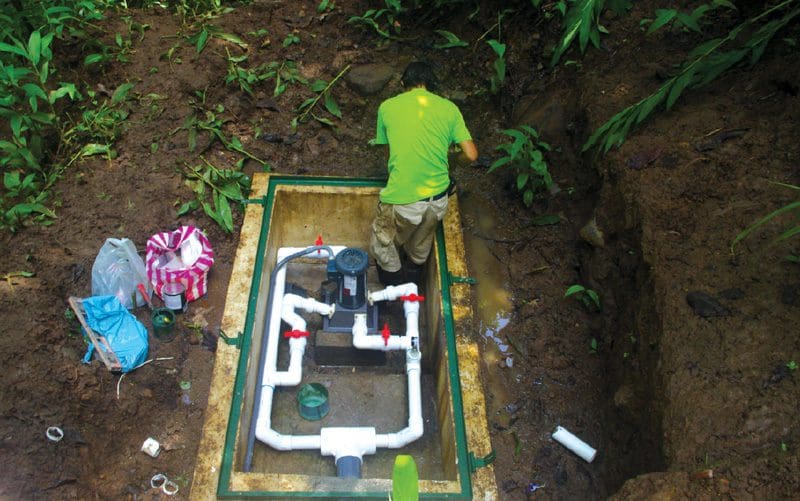
DIY Micro-Hydro: An ‘alternative’ alternative energy source
DIY Micro-Hydro, hydroelectricity: Residential electricity in Costa Rica is expensive. Rates are among the highest in Latin America and much higher than in North America. Even in a house without air conditioning or heat, our monthly consumption averaged 400 to 500 kWh, generating bills in the $150 to $200 range.
Wanting to save money and be more eco-conscious, we started looking at options to generate our own power. Based on our recent billing records, we needed a solution that could give us 10 to 14 kWh per day.
You can’t build your
own micro-hydro system
in a stream you do not own.
Solar power is the most obvious alternative energy source that comes to mind for Costa Rica consumers. It’s a good option for many people, in addition to being good for the planet.
But solar is not the only option, and we were interested in looking at other possibilities. In fact, more than 94 percent of Costa Rica’s electricity is derived from a renewable resource. But relatively little of that is solar or wind power; the rest comes from water. Hydroelectric power generates about 80 percent of the country’s electricity. On such a mega-scale, it’s no small production: enormous dams use water flowing through huge water turbines to create and store electricity. That’s why Lake Arenal was created.

We built a bridge above the finished intake dam (forebay) and concealed most of the feed pipe underground to preserve the stream’s natural beauty.
Surprisingly hydroelectricity does not necessarily have to be such a big deal, even for an “ordinary” residential consumer. Under the right conditions, you too can generate power the same way with your very own micro-hydro system.
I’m not saying micro-hydro is an easy solution. And it’s definitely not for everyone — literally — in terms of accessibility. That’s because first, you need water. Anyone can harness energy from the sun, but not so with hydro. It can not be just any water; it has to be water you can use … not as straightforward as it seems. Natural water resources like streams and rivers are considered public. So you can’t build your own micro-hydro system in a stream you do not own.
What you might be able to do, however, is create one in a stream that flows through property you own on both sides, with the intake and outflow also inside your property.
Second, you must have enough water. A small seasonal trickle will not be useful; the stream must flow all year at a rate sufficient to generate power. If you can’t fill a 5-gallon bucket in under 5 seconds, you don’t have sufficient water.
Third, and probably most important, you require sufficient “head” to drive the system. Head refers to vertical drop from the water intake to the generator turbine. You need a minimum 50-foot vertical drop to generate enough power.
Once we determined all of these requirements could be met on our property to generate about 12 kWh of electricity a day, we undertook to build a micro-hydro system in 2015. We worked with Osa Waterworks (osawaterworks.com) on the design and installation.
A major consideration was where the intake and turbine housing would be. To maximize the 50-foot head drop, our intake and turbine housing are just over 150 meters apart, with 4-inch PVC pipe running from the intake to the housing, built into the ground mostly for esthetic reasons.
Our turbine is US built with a maximum output of 2.5 kW. It’s compact and works like a car alternator. The spinning magnets inside produce electricity. It uses what’s called a Pelton wheel, driven by the force and speed of water hitting it. That’s why the head drop is important. The water column weight creates pressure, increasing as water flows through the 4-inch pipe into half-inch nozzles. The faster the wheel spins, the more power.

Also for esthetic reasons, our powerhouse was designed to be hidden underground. Here, you see the turbine in the center attached to four nozzles. The increase in pressure to drive the turbine occurs when water flowing through the 4-inch diameter pipe is diverted through four two-inch diameter feeds, each connected to one of the half-inch diameter nozzles.
We also sacrificed distance to our power inverter, running over 200 meters of cable via an underground conduit from the turbine to our garage, where the inverter and storage are. With electricity already running into the house, we are using a smart grid system. Any power we need in addition to the hydropower we use comes from the grid. Reasons for not using a grid tie system with the national power company are a topic for a separate article.
The installation was not without complications, including sediment clogging of the original intake placement on the river bed to allow unobstructed water flow. Some trial-and-error modifications using a small dam have been working well.
Was it worth it? Our micro-hydro system has been operating for almost three years. It cost over $12,000, more expensive than a solar system of comparable size. But over a payback period of 10 or 12 years, this was not a concern. Our monthly electric bills now range between $20 and $25 since we do not generate 100 percent of our energy needs. But we’re saving $120 or more a month from what we used to pay, almost $1,500 a year. With the government looking at a new VAT charge on electricity our payback could come sooner.
We are happy with our micro-hydro system and its eco-friendliness. Besides, it has a “cool” factor! There are few residential systems like this in the country so lots of people are curious and want to come and check it out.
Building Greener in Guanacaste
Picking the Right Windows
Swimming Pools, Design Construction and Maintenance
Know Before You Buy, The importance of Home inspection
From Dream to Reality
Picking your Dream Property
Storm Protection for Your Home
Roofing 101: Guanacaste Style
Guanacaste Tropical Hardwoods
Going with the flow: Rain Runoff and Erosion
Understanding Tico Plumbing
